INDIAN ARMED FORCES CHIEFS ON OUR RELENTLESS AND FOCUSED PUBLISHING EFFORTS

The insightful articles, inspiring narrations and analytical perspectives presented by the Editorial Team, establish an alluring connect with the reader. My compliments and best wishes to SP Guide Publications.

"Over the past 60 years, the growth of SP Guide Publications has mirrored the rising stature of Indian Navy. Its well-researched and informative magazines on Defence and Aerospace sector have served to shape an educated opinion of our military personnel, policy makers and the public alike. I wish SP's Publication team continued success, fair winds and following seas in all future endeavour!"

Since, its inception in 1964, SP Guide Publications has consistently demonstrated commitment to high-quality journalism in the aerospace and defence sectors, earning a well-deserved reputation as Asia's largest media house in this domain. I wish SP Guide Publications continued success in its pursuit of excellence.
- Operation Sindoor: Resolute yet Restrained
- India’s Operation Sindoor Sends a Clear Message to Terror and the World – ‘ZERO TOLERANCE’
- Japan and India set forth a defence cooperation consultancy framework, talks on tank and jet engines
- Terrorist Attack in Pahalgam in Kashmir: Unfolding a long surgical war against PAK
- Lt General Pratik Sharma takes over Command of Indian Army's Northern Command
American HSVTOL Aircraft & Russian UGV
US Special Operations Command’s has been looking for a new High-Speed Vertical Take-Off and Landing (HSVTOL) aircraft as a high-speed successor to its current CV-22B Osprey, which is used for Special Operations Forces (SOF)
 |
The Author is Former Director General of Information Systems and A Special Forces Veteran, Indian Army |
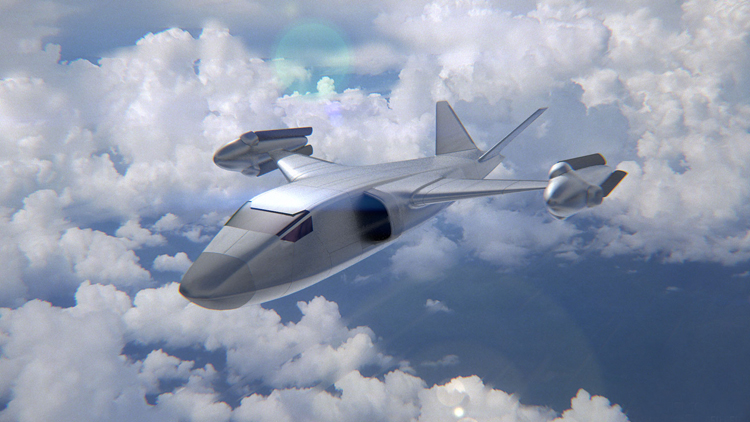
The recent US data leak of classified documents has confirmed, among other things, presence of Western Special Forces (US included) in Ukraine, as was suspected for long. The employment of special operations forces has increased worldwide with asymmetric, hybrid and grey zone warfare taking precedence over conventional war. Special Forces members implement unconventional operations by air, land, or sea during combat or peacetime as members of elite teams. These activities include offensive raids, demolitions, reconnaissance, search and rescue, and counterterrorism. Militaries all over the world are working on improving the combat potential of their Special Forces – firepower, navigation, communications, mobility, protection, and logistics.
Future wars would likely demand more aircraft that can land in places that don’t have runways. The need for HSVTOL aircraft is also highlighted with visuals of aircrafts landing on roads in the ongoing war in Ukraine.
The US Special Operations Command’s (SOCOM) has been looking for a new High-Speed Vertical Take-Off and Landing (HSVTOL) aircraft as a high-speed successor to its current CV-22B Osprey, which is used for extended-range infiltration, exfiltration and resupply missions for Special Operations Forces (SOF). The Osprey can fly at a maximum of 280 knots. The critical mission profiles for the CV-22B Osprey replacement include infiltration and exfiltration of special operations forces and equipment, personnel recovery, aero-medical evacuation, and tactical mobility.
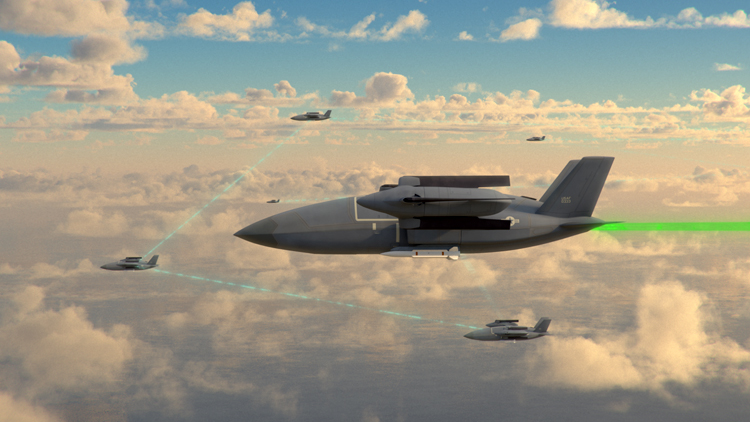
The Pentagon’s Defense Advanced Research Projects Agency (DARPA) announced recently that it is working with the Special Operations Command on the Speed and Runway Independent Technologies, or SPRINT, programme. The project could meet a growing demand for aircraft that can land on unprepared surfaces. Details of the programme are hazy and shrouded in secrecy as should be expected for all DARPA projects but there is speculation that the new aircraft would not have helicopter rotors and with emphasis on speed, faster than the CV-22B Osprey.
Future wars would likely demand more aircraft that can land in places that don’t have runways. The need for HSVTOL aircraft is also highlighted with visuals of aircrafts landing on roads in the ongoing war in Ukraine. A recent study by Rand Corporation has predicted that if China attacked Taiwan, the conflict could begin with the destruction of airfields. China would be planning the same in case it attacks India – especially destroying the airfields in Ladakh and Arunachal Pradesh.
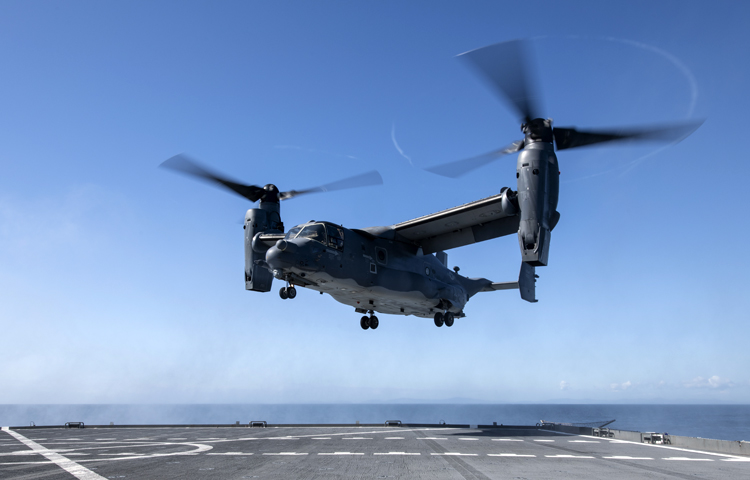
Drones could be part of the solution to finding landing spots without runways. BAE Systems recently showed off its new unmanned VTOL ‘Strix’. Designed to carry up to 160 kg and with a collapsible footprint of 2.6m x 4.5m, it can fit into a standard shipping container and carry various weapons, including the AGM-114 Hellfire. Taiwan has sold 800 x Revolver 860 VTOL combat drones to Poland and were transferred to Ukraine. The Revolver 860 has a 1.35m diameter and weighs 42 kg. Its four arms and eight propellers allow it to fly up to 20 km and remain airborne for 20-40 minutes when equipped with eight 60mm mortar rounds. A recent social media post showed the Revolver dropping mortar shells on Russian troops.
Russia has deployed the ‘Marker’ anti-tank robotic unmanned ground vehicle (UGV) which resembles a tank in appearance. In February 2023, four Marker robots were deployed in Russia’s special operation zone in Ukraine.
The new aircraft replacing the CV-22B Osprey for SOCOM would naturally be far bigger than the Strix or the Revolver 860 but now that India has embarked on manufacturing the C295 and RAJAS-Rakshan military transport aircraft under ‘Make in India’, we must get going on a project to develop our own HSVTOL for special operations under the same initiative.
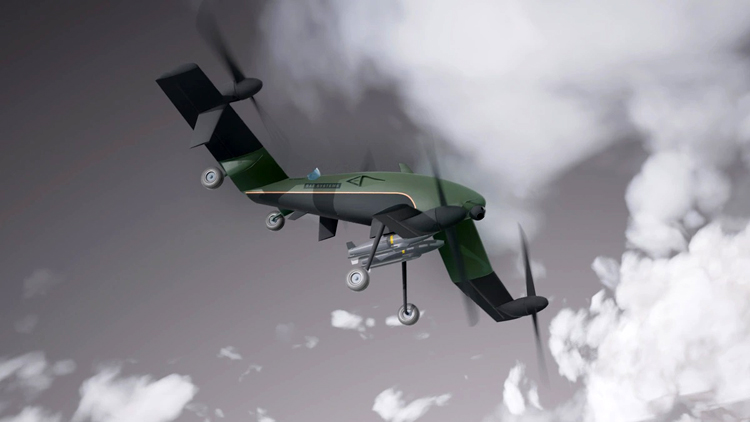
Russia has deployed the ‘Marker’ anti-tank robotic unmanned ground vehicle (UGV) which resembles a tank in appearance. Five autonomous robotic platforms were developed within the project framework, two of which were tracked and three of which were wheeled. In firing tests during August 2019, the platform successfully tracked targets autonomously and destroyed them. In August 2020, two Marker robotic platforms were displayed at the Army-2020 International Military-Technical Forum. Tests to develop the Marker platform’s key technologies were carried out in October 2021. Work on the project was completed in January 2022. In February 2023, four Marker robots were deployed in Russia’s special operation zone in Ukraine.
The ‘Marker’ anti-tank robotic unmanned ground vehicle (UGV) concept is worth studying and taken on as a ‘Make in India’ project suitably modified to meet specific Indian requirements
The Marker robotic platform can acquire complete situational awareness of the surrounding area up to more than 100m. This allows the operator to modify its movement in a timely manner without direct intervention. It is an advanced autonomous multi-functional ground-based robotic complex platform equipped with a unified payload module and a UAV cluster launch module. The tracked platform’s payload module is equipped with opto-electronic instruments and six independent rotation axes. The module can support two types of payloads, which can each be used independently. Marker has a rotatable combat module that can turn 540° in a second, improving its speed and accuracy.
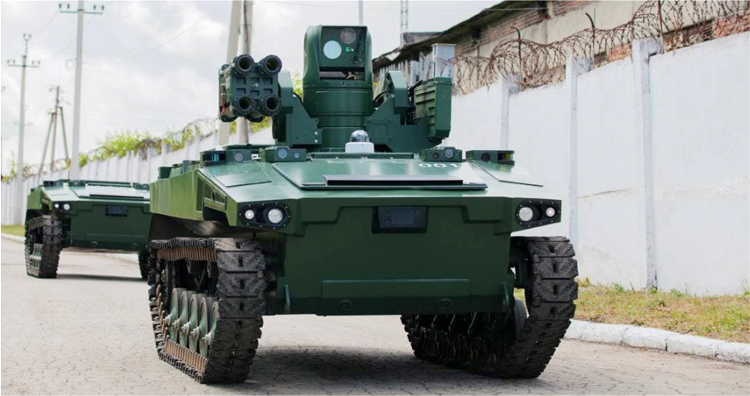
The combat variant can be equipped with anti-tank missile systems, coaxial heavy machine guns, grenade launchers and other weapons. Its control system features an electronic catalogue containing images of targets in both visible and infrared ranges, which helps the system automatically determine the equipment of adversarial forces. The reconnaissance variant connects to the robot through a cable, removing the need for a battery. Its control system remains unaffected in electronic warfare.
The ‘Marker’ anti-tank robotic unmanned ground vehicle (UGV) concept is worth studying and taken on as a ‘Make in India’ project suitably modified to meet specific Indian requirements.





